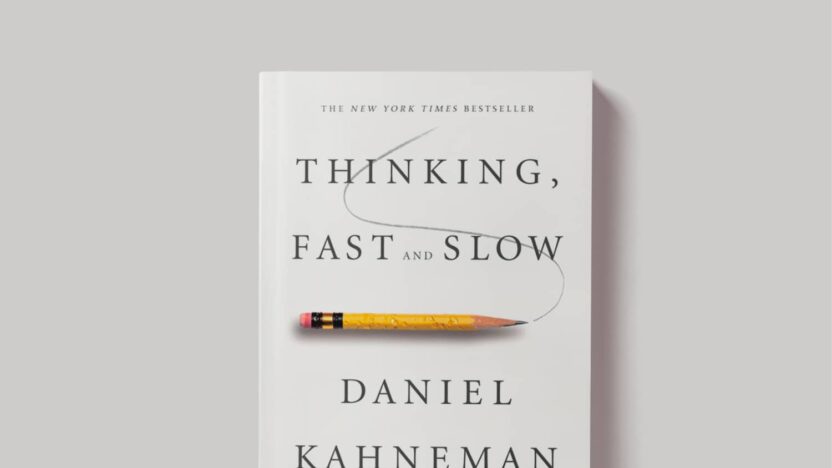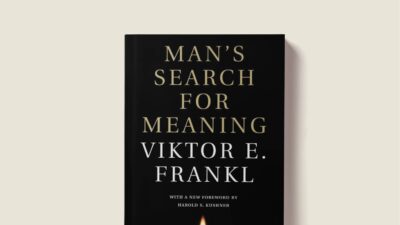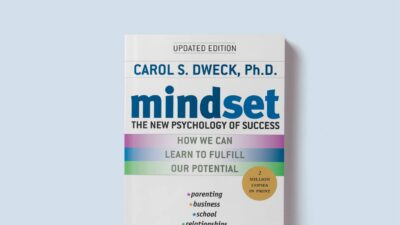Making better decisions is a fundamental skill that transforms every aspect of life. In this article, we’ll explore the groundbreaking insights from Daniel Kahneman’s Nobel Prize-winning research on decision making, presented in his revolutionary book “Thinking Fast and Slow“. By understanding the science behind how our minds work, we can develop powerful strategies to enhance our decision-making capabilities and achieve better outcomes in both personal and professional spheres.
- 1. The Two Systems of Thinking
- 2. The WYSIATI Rule (What You See Is All There Is)
- 3. The Anchoring Effect
- 4. Loss Aversion
- 5. The Availability Bias
- 6. The Planning Fallacy
- 7. The Halo Effect
- 8. Confirmation Bias
- 9. The Endowment Effect
- 10. Regression to the Mean
- 11. The Peak-End Rule
- 12. Cognitive Ease
- 13. The Money Illusion
- 14. Base Rate Neglect
- 15. The Narrative Fallacy
- 16. Intensity Matching
- 17. The Law of Small Numbers
- 18. Priming Effects
- 19. Duration Neglect
- 20. The Focusing Illusion
- 21. Professional Deformation
- 22. Outcome Bias
- Conclusion
1. The Two Systems of Thinking
Your brain has two ways of thinking: System 1 is fast and automatic, like when you recognize a friend’s face or know that 2+2=4. System 2 is slower and requires effort, like solving a tricky math problem or planning your schedule. Understanding these two systems helps you know when to slow down and think carefully about important decisions, instead of just going with your quick gut reaction.
2. The WYSIATI Rule (What You See Is All There Is)
Our brains often make decisions based only on the information right in front of us. This is called the “WYSIATI Rule.” For example, if you see a news story about a shark attack, you might think beaches are super dangerous. But you’re not thinking about the millions of people who swim safely every day. Remember to look for more information before making big decisions.
3. The Anchoring Effect
The first number or piece of information you hear about something becomes an “anchor” in your mind. If you see a $100 shirt on sale for $50, you think it’s a great deal because your mind is anchored to $100. But maybe the shirt is only worth $30! Always question the first price or number you see and look for other options to compare.
4. Loss Aversion
People hate losing things more than they enjoy gaining things. This is called “loss aversion.” If you find $20, you’ll feel happy. But if you lose $20, you’ll feel even more upset. This fear of loss sometimes makes us make bad choices, like holding onto things we don’t need anymore just because we don’t want to lose them.
5. The Availability Bias
We tend to think things that come to mind easily are more common or important than they really are. This is the “availability bias.” If you hear about three plane crashes on TV, you might think flying is super dangerous. But actually, driving a car is much more risky! Remember that just because you can easily think of something doesn’t mean it happens a lot.
6. The Planning Fallacy
People usually think tasks will take less time than they actually do. This is the “planning fallacy.” If you think homework will take 30 minutes, it might really take an hour. To fix this, think about how long similar tasks took in the past, and add extra time for unexpected problems. It’s better to finish early than to run late!
7. The Halo Effect
When we like one thing about someone or something, we tend to think everything else about them is good too. This is the “halo effect.” If someone is good at sports, we might assume they’re also smart and nice, even if we don’t really know. Try to judge each quality separately instead of letting one good thing make everything seem good.
8. Confirmation Bias
We love finding information that supports what we already believe and ignore information that doesn’t. This “confirmation bias” can make us stick to wrong ideas. If you think cats are mean, you might only remember the times cats hissed at you and forget all the times they were friendly. Try to look for evidence that might prove your beliefs wrong.
9. The Endowment Effect
We value things more just because we own them. This “endowment effect” makes it hard to let go of stuff. Your old toy might not be worth much money, but because it’s yours, you think it’s super valuable. Try to think about things from an outsider’s view – would someone else think this is as valuable as you do?
10. Regression to the Mean
After something extreme happens, the next thing usually is more average. This is “regression to the mean.” If you get a really high score on one test, your next score might be lower, even if you study the same amount. This isn’t bad luck – it’s just normal! Don’t get too excited or worried about one extreme result.
11. The Peak-End Rule
We judge experiences mainly by their highest point (peak) and how they end, not by the average of the whole experience. This “peak-end rule” means a vacation with one amazing day and a great last day might feel better than a vacation that was pretty good every day. Try to remember the whole experience, not just the highlights.
12. Cognitive Ease
Our brains prefer things that are easy to think about and understand. This “cognitive ease” can make us choose familiar options over better but more complicated ones. If you always order the same lunch because it’s easy, you might miss out on trying something new and delicious. Sometimes it’s worth making your brain work a little harder!
13. The Money Illusion
We often think about money in terms of numbers rather than what it can buy. This “money illusion” can trick us. Getting a $1 raise might sound good, but if everything costs 5% more than last year, you can actually buy less with your money. Always think about what money can buy, not just the numbers.
14. Base Rate Neglect
We often ignore general statistics (base rates) and focus on specific details instead. This “base rate neglect” can lead to wrong conclusions. If someone wearing a uniform looks trustworthy, remember that uniforms can be fake – check the general statistics about scams before trusting strangers, no matter how they look.
15. The Narrative Fallacy
We love stories and try to create them even when things happen randomly. This “narrative fallacy” makes us see patterns that aren’t real. If you win three games in a row wearing your “lucky” socks, you might think the socks are magic. But it’s probably just chance! Don’t create stories where there aren’t any.
16. Intensity Matching
We often compare things that shouldn’t be compared, like matching how smart someone is to how tall they are. This “intensity matching” can lead to silly conclusions. Just because someone speaks loudly doesn’t mean they’re more knowledgeable. Judge each quality separately and don’t mix different types of measurements.
17. The Law of Small Numbers
We tend to draw big conclusions from small amounts of information. This “law of small numbers” can be misleading. If two of your friends don’t like broccoli, you might think nobody likes broccoli. But you need to look at much more information before making general conclusions about what most people like.
18. Priming Effects
What we experience in one moment affects how we think and act in the next moment. These “priming effects” can influence us without us knowing. If you watch scary videos before bed, ordinary house noises might seem scarier. Be aware that your recent experiences can color how you see current situations.
19. Duration Neglect
We often ignore how long experiences last when judging them. This “duration neglect” means we might remember a short, intense experience more than a longer, gentler one. A quick, exciting roller coaster ride might seem better than a peaceful day at the beach, even though both are fun in different ways.
20. The Focusing Illusion
When we think about one aspect of something, we give it too much importance. This “focusing illusion” can distort our judgment. If you’re thinking about buying new shoes, you might focus only on how they look and forget about comfort. Remember to consider all important aspects, not just what’s on your mind right now.
21. Professional Deformation
Experts often see everything through the lens of their expertise. This “professional deformation” can make them miss other important aspects. A math teacher might focus only on numbers in a problem and miss the creative solution. Try to look at things from different angles, not just your area of expertise.
22. Outcome Bias
We judge decisions based on their results rather than how they were made. This “outcome bias” isn’t fair. If you make a careful decision that turns out badly due to bad luck, that doesn’t mean it was a bad decision. Focus on making good choices based on what you know at the time, not just the results.
Conclusion
Understanding these mental biases and thinking patterns can help us make better decisions in life. Remember, our brains are amazing but not perfect. By knowing these common thinking traps, we can catch ourselves when we’re about to fall into one and make smarter choices instead.
The key is not to try to eliminate these patterns – they’re part of how our brains work! Instead, we should aim to recognize when they might be affecting our judgment and take a step back to think more carefully about important decisions. This awareness can lead to better choices in school, relationships, and life in general.
Remember to be patient with yourself as you learn to spot these patterns. Just like any other skill, becoming a better thinker takes practice. Start by trying to notice one or two of these patterns in your daily life, and gradually build up your awareness of how your mind works.



